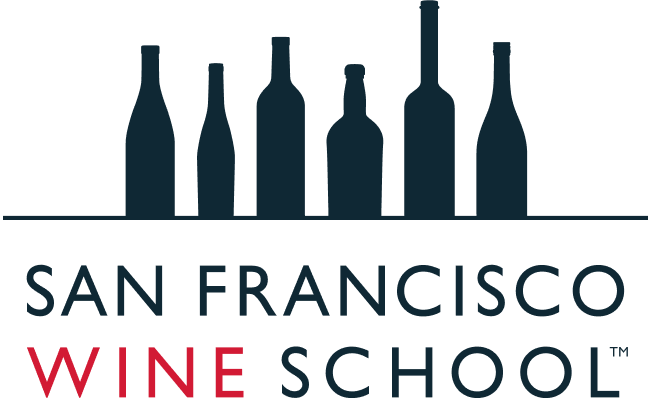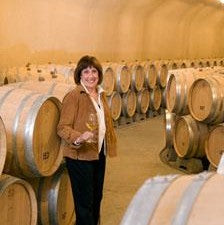Virtue--right action, versus happiness--right feeling: how does one satisfy either or both in one's work?
Maintain your ethics and core values at all costs. Reach balance between the two because if you compromise either you won't be happy. Pick something in which you've passion in working so you can support and maintain both. I love the wine industry, it brings me happiness working with the people in it, and I've been challenged in ethical issues in that if I hadn't applied both ethics and core values...in the face of strong opposition...together I wouldn't be happy.
When learning the craft, developing the wine list, and selling on the floor-how and why should the sommelier differentiate between wine as an everyday, an aspirational, and/or a luxury beverage?
It goes back to the basics. Learning the craft of being the sommelier means learning to read and understand your customer's demographics, their need for comfort and service given the changing moments. Some will be more about the host, others one's guest and talking, or about food and wine. Read the psychographic rather than demographic of your customer at that moment to determine if they're in the mood to have fun with wine and have more of an everyday, rather than aspirational, moment. If they're really into the experience of food and wine together then it I think it important that it fold into aspirational and luxury aspects. Having the ability to navigate the moment that the customer is experiencing is important, differentiating fun and recreation versus an epitome experience. That's the art of service.
1999 marked the year you both formalized your consulting services into the Jean Arnold Group while taking on Hanzell as a client, where, since 2002, you've been president. What led to this confluence?
I pitched Hanzell as my first client because I was a storyteller, and Hanzell had all the right parts of that puzzle. Its president Bob Sessions was a noted winemaker but wasn't a marketer. It took me four months to get its Board of Directors to take me on as a consultant. I worked only with small, family-owned properties, consulting to Jess Jackson for a year. He asked me to take on his nine smaller wineries outside of KJ along with 5000 acres of his best vineyards. I kept my consulting arrangement with Hanzell with someone else managing it as a client. When Jess & Barbara decided not to sell KJ but rather to put their two businesses together I decided that wasn't my role to develop. Hanzell then asked me to become its president as Bob Sessions was then retiring. I was dating Bob at the time and married him later in 2002, so I basically fell in love with Hanzell.
Though you've since relinquished your active presidency of Hanzell and now are emerita, doesn't the implication of salaried loyalty to one winery imply a potentially skewed vision for your consultancy clients? How did you earlier balance these two overlapping activities and avoid conflicts inherent in this dynamic?
I did it nine years with difficulty. The owner/chairman of Hanzell trusted me and I didn't take on clients that were in a comparative market segment. I did more teaching at Sonoma State University, I also did luxury brand research using Hanzell as a case study as to how luxury brands are created working out details of perception and image creation. It wasn't about Hanzell's business, it was about image creation.
What are the key qualities for leadership?
Charisma, getting people to listen and follow you. Going hand-in-hand with that is that you, in turn, must care about people. Many people have vision, but in leadership you have to articulate that vision in commonly understood language which inspires. Be able to stay the course with your beliefs.
You've been at the forefront of addressing the questions of 'feminine' leadership for many years. What changes in perception and execution of these principles have you witnessed? To what extent has the whole of society shifted since these concerns had begun being addressed?
The manifestation is that specific women are allowed into the boardroom to participate in strategy and in policy-making conversations. When more feminine collaborative policies are implemented the majority have been successful. In middle management there's been tremendous success in women's leadership, especially in sales & marketing. Women's participation in winemaking has been outstanding and the contributions have taken hold within major advances in quality standards and in consumer perception. With the wine industry allowing for more flexibility in changing positions within it, women have been commensurately successful in finding and blazing new paths within the wine industry. However, the executive level is still patriarchal and very suspicious of feminine leadershipwith the exception on rare individual bases.
Balancing work versus other aspects of life--how best to approach the challenges effecting the average person working in wine?
It's a paramount challenge to have balance in our life in this business because the work can end up being a lifestyle due to easy access to excess. One just has to be mindful of that balance when your works becomes stressful and access to alcohol and food and...more stress. We go to fine restaurants having great meals and wines, and the mindfulness of keeping things in balance becomes a challenge.
How have US restaurant wine service standards and customers’ expectations of it changed since you began working with wine? How should they continue to develop?
In the '80s and '90s if you had your wine on a wine list, as long as the restaurant had had inventory, even if it was FedExed from a winery, and even with a bad vintage review, it'd have that placement for 23 years, while now that same wine might be listed for only 23 weeks. Respectfully, wine lists now have wines from all over the world and I admire that. But suppliers have to work harder and as suppliers the past 58 years we haven't been able to count on distributors to do this for us. I think sommeliers need to be assertive in obtaining the wines they want as those small producers they may want often have trouble getting into broader distribution. If wine directors/sommeliers make their voices heard in wanting these wines it'll then force the distribution network to provide them those wines.
Sign up for our weekly blogs. See our upcoming full program and single course schedule. Private, customized corporate training is also available.


